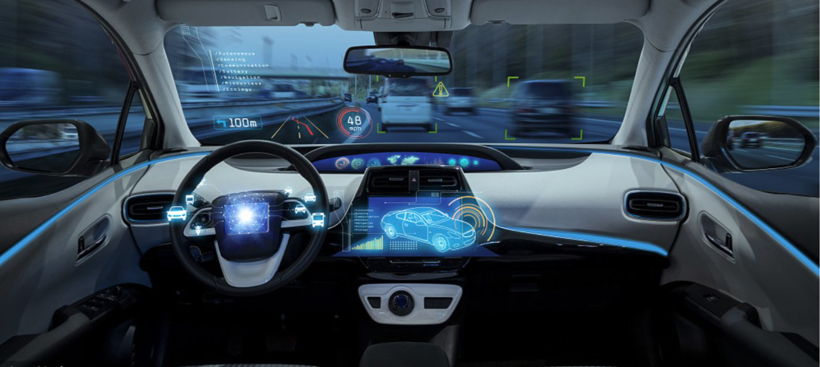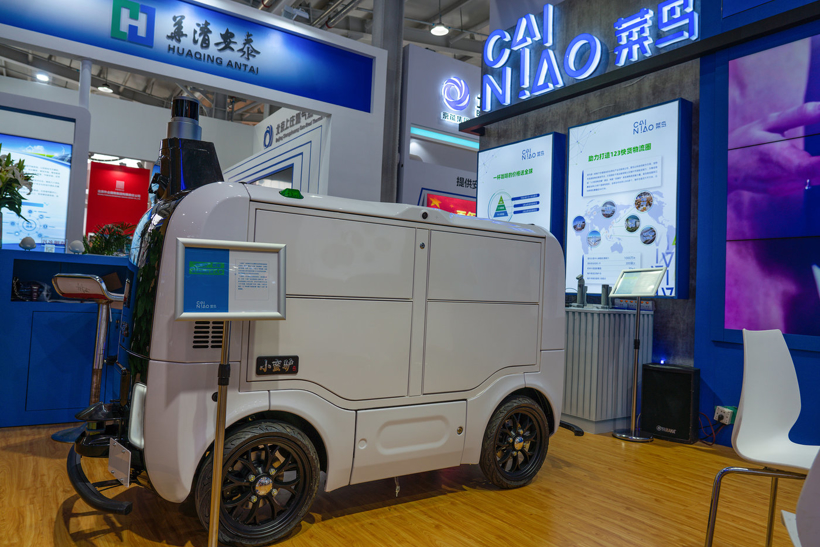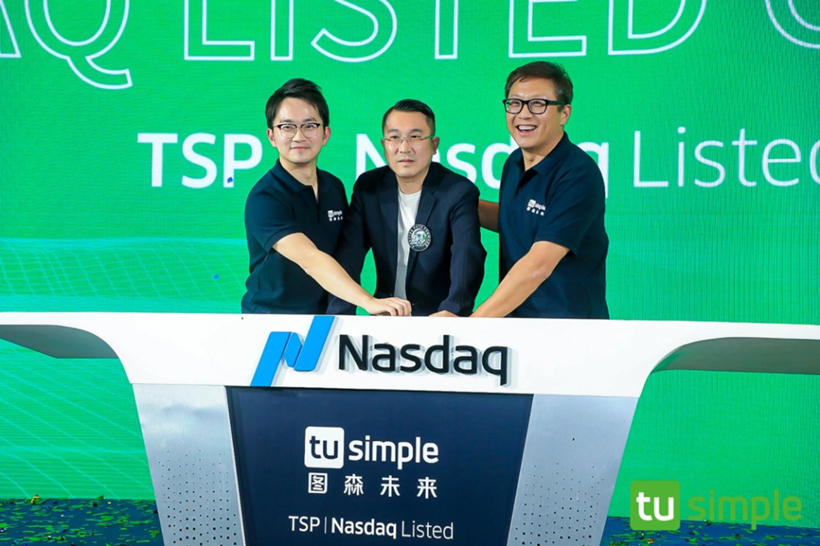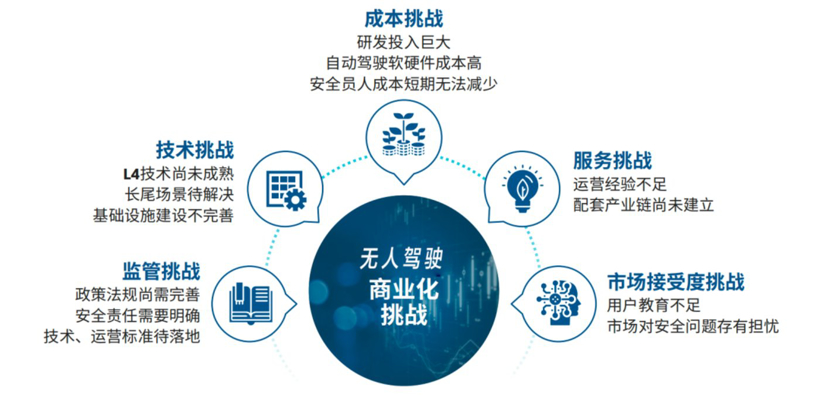Scan QRCode

Autonomous driving is no longer popular, recently another technology giant stepped on the brakes!
Just last week, it suddenly emerged that Alibaba Cloud Damo Academy had disbanded its autonomous driving team, with only nearly a hundred people transferred to Cainiao Group. The department was assigned to the technical team under Cainiao CTO, and nearly 200 others were laid off. The Damo Academy no longer retains related business, and the team after merging with Cainiao will mainly maintain the operation of the Little Man Donkey business without significant expansion.
Regarding this, Alibaba Cloud has refuted rumors that when the autonomous driving business of Damo Academy is transferred to Cainiao Group, some personnel will be transferred to Cainiao, while others will enter other Alibaba businesses. The personnel optimization that accompanies business adjustments does exist, but the news of 70% layoffs does not match the facts.
It can be seen that Ali, who is wealthy and wealthy, will not have unlimited blood transfusions, and has started to be cautious and focus on its main business. After all, long-term high investment cannot see returns in the short term, and giants cannot endure it.

Of course, Alibaba is not the only one suffering in their hearts. Some autonomous driving startup companies that have been unable to self generate for a long time have already tightened their belts. In the past two years, autonomous driving has long been no longer a hot topic for capital, with continuous bad news, either layoffs or closures, business contraction or busy transformation
Two years ago, everyone was still pursuing high computing power chips and high-precision maps; This year, we suddenly talked about cost reduction, efficiency improvement, and cost-effectiveness. Entering 2023, the popularity of the autonomous driving industry is decreasing, and the overall situation is still in a downward bottoming stage. This is due to the lower than expected commercialization and the pressure of high investment, leading to the swing of the enterprise, which brings certain uncertainty to the future development of high-level autonomous driving.
The "wind" of unmanned driving has been blowing for more than a decade, and although technology continues to mature, commercialization has been constrained by costs, policies, laws, and other conditions, and has been delayed in fully spreading. So, where is the way out for autonomous driving? Is there still hope for achieving true scale and commercialization path?
Abandoned business
The embryonic stage of Alibaba's autonomous driving business originated from novices from the beginning.
At the end of 2015, Cainiao Network established Cainiao ET Laboratory, and one of its important tasks was to develop a persona free streaming car, mainly led by Chen Junbo. This became the starting point for Alibaba to create a character less streaming car in the future.
In 2018, Cainiao's ET laboratory and Alibaba Artificial Intelligence laboratory merged to form Alibaba Damo Academy. Since its establishment, it has mainly focused on the two major sub markets of unmanned trunk logistics and terminal logistics, with the development goal of L4 and L5 level fully unmanned autonomous driving. It has two major products: autonomous truck "Da Man Lv" and unmanned logistics car "Xiao Man Lv".
Among them, "Xiao Man Lv" was released in 2020 and mass-produced for commercial use, focusing on delivery, terminal logistics, unmanned retail, and park logistics delivery scenarios. The "Da Man Lv" was developed in 2021 and positioned as an L4 level unmanned trunk logistics.
Considering technical and cost issues, at the beginning of its establishment, Damo Academy chose scenarios different from Google Waymo, Baidu Apollo, and General Cruise - unmanned logistics. At that time, Jack Ma made three requirements for the Dharma Hall: to live longer than Alibaba; Serving at least 2 billion people worldwide; We must face the future and solve future problems with technology.
Jack Ma also emphasized that laboratories need to make money, and research should go out of the laboratory and achieve commercialization. However, the commercialization of the self-driving business of the Dharma Academy did not progress smoothly, which also laid the groundwork for subsequent adjustments.

In 2021, Wang Gang, Vice President of Alibaba Dharma Academy, issued a "Military Order", and in three years, the size of the small donkey fleet will reach 10000 vehicles. However, since announcing the sales of 350 units of "Little Man Donkeys" in October 2021, no new sales data has been released to the public.
Following closely is the departure of executives. Since last year, the core personnel of Alibaba's autonomous driving have gradually started to leave the team. In January 2022, Wang Gang, the person in charge of autonomous driving at Alibaba, announced his resignation and started his own business; In March of this year, Chen Junbo, who took over the position of head of autonomous driving at Da Mo Academy, was also confirmed to have resigned and started a cleaning robot company together with the former CEO of Alibaba Robotics, Gu Zulin.
Not only these two core executives, but according to media statistics, more than half of the 13 "sweeping monks" (the original core technical personnel) in the Dharma Hall have left since the beginning of the 21st century.
The reason for the adjustment is that several sources close to the Dharma Institute told Cheyun.com that the main difficulty lies in the commercialization of Dharma Institute technology. L4 does not have a sustained business model, and there are only a few scenarios that can be implemented, with logistics being relatively large.
In fact, nowadays, the concept of unmanned flow cars or model rooms in every company is applied on a small scale. In the past, it was called for mass production without realizing how many units. Relatively speaking, it is still cheaper for labor, and the cost of unmanned cars is too expensive, "said a person familiar with the situation.
From the recently released financial report, it is also found that innovative businesses such as the Dharma Academy are still in a loss making state. According to Alibaba's third quarter report for the fiscal year 2023 (the fourth quarter of 2022), revenue from innovation and other businesses, including Damo Academy and Tmall Genie, was 823 million yuan, a year-on-year decrease of 20%. The adjusted EBITA loss was 1.235 billion yuan.
There is also a big background behind this adjustment, which is that Alibaba is launching a 1+6+N organizational transformation, and each business is no longer a 'big pot' and needs to go public independently. It is normal for non revenue generating businesses to be split, and ultimately the autonomous driving business will step on the brakes.
In the future, Damo Academy will prioritize its resources towards the field of large models, and Alibaba's business related to autonomous driving will be Zebra Zhixing and Alibaba Cloud. Especially Alibaba Cloud's "car cloud" is a big cake that competitors are dividing up. At present, Alibaba Cloud has served over 70% of automotive companies in China, including Xiaopeng, FAW, Geely, Great Wall, Chang'an, Horizon, and others.
Ebb tide moment
Obviously, Ali is not an exception.
The market environment of the past year has dealt a great blow to autonomous driving enterprises. It is estimated that the total financing amount in the field of autonomous driving in 2022 will be around 20 billion yuan, a decrease of nearly 80% compared to 2021. According to Crunchbase's statistics, over the past two to three years, there has been a collective avalanche in the valuation of more than ten autonomous driving companies (including LiDAR) listed in the United States, with Velodyne, which makes LiDAR, and Embark, which makes autonomous trucks, falling by over 95%.
Recently, Tucson, the top player in truck autonomous driving, has been unable to withstand pressure in the future and has received a delisting notice from NASDAQ, entering the countdown to suspension. This means that the unmanned truck company, which went public in 2021, lost 95% of its market value in 2022, and its stock price is still declining this year. If remedial action is not taken soon, its life may be on the line.

On May 18th, Tucson announced in the future that it would restructure its business in the United States and reduce team size, reducing the global workforce by approximately 30%. Tucson stated in a future announcement that the decrease in the number of employees will only affect its business in the United States. The layoffs are expected to result in one-time compensation costs of $12 million to $13 million and achieve annual cash compensation savings of approximately $64 million to $68 million. We will provide compensation and assistance to the affected North American employees. In the future, Tucson's business focus will be further tilted towards the Asia Pacific region and the size of team recruitment will be increased, "Tucson said in the future.
Since October last year, Tucson has been embroiled in successive high-level battles, restructuring and layoffs, business transformation (from L4 business to L2+), and CEO resignation events in the future. Recently, Chen Mo, the future chairman of Tucson, also stated that Tucson's future commercial mass offline may not be achieved until 2026. In other words, Tucson's future prospects are worrying.
Embark, a publicly traded autonomous driving company that was once synonymous with Tucson's future, is on the brink of bankruptcy, announcing the layoffs of 70% of its employees in March this year.
Whether it's the disbanded team of the Dharma Academy, Tucson Future, or Embark, their main business is to develop fully autonomous freight trucks.
Like the plight of unmanned trucks, the development of unmanned taxis (Robotaxis) is not smooth and is also undergoing a knockout stage.
Relatively speaking, Robotaxi has the highest technical implementation difficulty, so players are mainly technology giants and car giants, including Google's Waymo, Baidu Apollo, General Cruise, Ford Argo AI, and Aptiv.
Since 2017, before China, American companies have been the first to attempt road testing, until Robotaxi (Waymo and Cruise) obtained a toll permit and achieved commercial implementation, which took four years. However, starting from 2021, Robotaxi's commercialization has faced challenges in the United States.
Since April 2021, multiple executives at Google Brothers' Waymo have resigned, including the company's CEO. It is believed that the personnel changes at Waymo are due to the unsuccessful commercialization of autonomous driving technology. At the end of October 2022, Argo AI, an autonomous driving company supported by Ford and Volkswagen, suddenly announced its intention to dissolve the company internally; Ford CFO John Lawler believes that although we are optimistic about the future of L4 class autonomous driving, Argo AI will need at least 5 years to achieve large-scale profitability.

After Argo announced its imminent closure, some foreign experts believe that the global (autonomous driving technology field) only remains the duopoly between Waymo and Cruise.
On May 11th recently, the California Public Utilities Commission (CUPC) released two draft resolutions. According to the above draft resolution, L4 level autonomous driving manufacturers Cruise and Waymo will both be allowed to open 7 in San Francisco × 24/7, unmanned commercial Robotaxi service.
Obviously, without the limitations of regional scope and operating time, the commercialization of Waymo and Cruise has begun to enter a state of implementation. It can be said that looking at the entire Silicon Valley, the only L4 company that can continue to burn money is Waymo, which relies on Google, and Cruise, which relies on General Motors.
Looking back at the current situation in China, companies such as Baidu Apollo, Xiaoma Zhixing, Auto X, Wenyuan Zhixing, Yuanrong Qixing, Qingzhou Zhihang, and Didi Chuxing are all trying to commercialize autonomous taxi operations, but it is difficult to achieve large-scale commercialization. The difficulty lies in the continuous iteration of technology, laws and regulations, so the scope of coverage and services is still limited.
Currently, AutoX is one of the few companies that maintains a focus on Robotaxi. Due to the pressure of survival, other companies have chosen various commercialization paths beyond Robotaxi, such as Robobus and Robotruck. Enterprises such as Koma Zhixing and Wenyuan Zhixing have chosen a strategy of parallel development - in addition to the Robotaxi business, the former also operates an autonomous truck business; The latter's business also covers areas such as autonomous minibuses, autonomous freight vehicles, and autonomous sanitation vehicles.
At the same time, these companies are also starting to downgrade from L4 level autonomous driving to L2, joining the fiercely competitive Tier 1 (first tier automotive supplier) track. This is also to achieve profitability through "technology decentralization", thereby feeding back its L4 level autonomous driving business.
Xiaoma Zhixing is currently in contact with some automotive OEM manufacturers to seek cooperation related to L2-L3 level autonomous driving; Wenyuan Zhixing previously announced a partnership with global component supplier Bosch to jointly develop L2-L3 level autonomous driving software for passenger cars; Originally focused on the Robobus field, Qingzhou Zhihang has launched a mass production solution for L2-L3 front-end assembly for main engine manufacturers.
Is there a future?
Compared to the open scene of unmanned trucks and taxis, the closed scene of unmanned delivery vehicles is more suitable for cross over routes and easier to achieve autonomous driving. Many people outside the world are optimistic about the commercialization prospects of this market.
In addition to unmanned delivery vehicles, there are also unmanned sanitation vehicles, unmanned mining vehicles, ports, etc. in closed scenarios or fixed routes. Customers with commercial needs will pay, especially start-up companies that focus on unmanned mining vehicles, who continue to receive financing news. The above scenarios have become the main battlefield for the commercialization and mass production of autonomous driving.
This is mainly because: firstly, the driving speed and complexity of this scene are low, which can avoid traffic accidents; Secondly, there are low requirements for chips and computing platforms, resulting in lower single vehicle costs; Thirdly, there is no cockpit and no need for safety personnel to follow, reducing labor costs.

On May 19th, at the 7th World Intelligent Conference, Chairman Zhang Kai of the Millimeter judged that 2023 was the year of the big test for the autonomous driving industry. The low-speed unmanned vehicle market began to move towards commercialization, and terminal delivery in commercial supermarkets, express delivery and other scenarios ushered in a turning point.
On the same day of the conference, Mimo Zhixing also released the third-generation end logistics automatic delivery vehicle - Xiaomotuo 3.0, priced at 89999 yuan, which can achieve L4 level autonomous driving and meet the unmanned delivery needs of multiple scenarios such as logistics, supermarkets, and retail. This is the world's first medium-sized end logistics automatic delivery vehicle with a cost of 90000 yuan, and the price is very competitive. It can be said that it has set a good example for unmanned delivery players who have been struggling with costs, and is one step closer to commercialization.
Even so, since the second half of last year, the unmanned delivery track, which is considered to be more commercially viable, has also been shrinking.
Last October, e-commerce giant Amazon officially announced that it had abandoned its nearly 10 year exploration of the Scout business; Shortly thereafter, FedEx also closed the unmanned delivery vehicle (Roxo) project; On May 13th this year, the American autonomous driving company Nuro, which focuses on low-speed unmanned delivery, began the pace of layoffs.
According to TechCrunch, the US technology media, Nuro will lay off approximately 340 employees, accounting for 30% of the current total number of employees. Accompanied by the layoffs, Nuro will slow down the pace of commercializing unmanned delivery vehicles. Nuro stated that the company will delay mass production of the third-generation unmanned delivery vehicle R3, reduce commercial pilot scale, and explore more efficient deployment models with partner manufacturers. Nuro expects that with the aforementioned cost reduction and efficiency increase measures, the company's ability to maintain normal operations with existing funds can be extended from 1.5 years to 3.5 years without additional investment.
It is obvious that in the external environment, the macroeconomic situation is sluggish, and the capital market tends to calm down; In the internal environment, insufficient hematopoietic capacity, difficulty in commercialization, and difficulty in maintaining sustained high R&D investment have all exacerbated the survival crisis of autonomous driving enterprises, leading to the "winter mode".

Source: Roland Berger
So many industry leaders have issued warnings that just last month at the 2022 annual report exchange meeting, BYD Group Chairman Wang Chuanfu also poured cold water on autonomous driving: no one has mentioned autonomous driving anymore, it's all bullshit. At first, it was driven by capital, so no one pointed out its shortcomings. Some manufacturers kept boasting about how much autonomous driving they would achieve in a certain year. Now that the time has come, they can't wrap it up anymore, the lies can't continue, the market value has fallen, and then they gradually return to rationality
Yes, the development of technology must serve the actual needs of users, and should be viewed rationally with the needs of users and the realizability of the environment.
Different from Google's Waymo, which directly chooses the L4 level high difficulty crossover route
AMS2024 Exhibition Guide | Comprehensive Exhibition Guide, Don't Miss the Exciting Events Online and Offline
Notice on Holding the Rui'an Promotion Conference for the 2025 China (Rui'an) International Automobile and Motorcycle Parts Exhibition
On September 5th, we invite you to join us at the Wenzhou Auto Parts Exhibition on a journey to trace the origin of the Auto Parts City, as per the invitation from the purchaser!
Hot Booking | AAPEX 2024- Professional Exhibition Channel for Entering the North American Auto Parts Market
The wind is just right, Qianchuan Hui! Looking forward to working with you at the 2024 Wenzhou Auto Parts Exhibition and composing a new chapter!
Live up to Shaohua | Wenzhou Auto Parts Exhibition, these wonderful moments are worth remembering!
Free support line!
Email Support!
Working Days/Hours!





